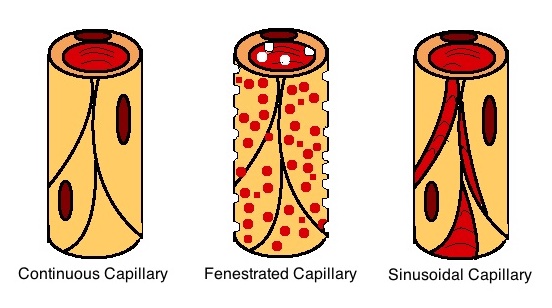|
Black Eye
A periorbital hematoma, commonly called a black eye or a shiner (associated with boxing or stick sports such as hockey), is bruising around the eye commonly due to an injury to the face rather than to the eye. The name refers to the dark-colored bruising which is the result of accumulated blood and fluid in the loose areolar tissue following a blow to the head. This blood tracks freely under the scalp producing a generalised swelling over the dome of the skull but cannot pass into either occipital or the temple regions because of the bony attachments of the occipitofrontalis muscle. But this fluid can, however, track forward into the eyelid because the occipitofrontalis muscle has no bony attachment anteriorly. This leads to formation of hematoma a few hours after the head injury or cranial operation. If injury is more extensive, potentially even a skull fracture, an apparent black eye can sometimes worsen and may require professional medical treatment before it will resolve. ... [...More Info...] [...Related Items...] OR: [Wikipedia] [Google] [Baidu] |
Emergency Medicine
Emergency medicine is the medical specialty concerned with the care of illnesses or injuries requiring immediate medical attention. Emergency physicians (or "ER doctors") specialize in providing care for unscheduled and undifferentiated patients of all ages. As frontline providers, in coordination with emergency medical services, they are responsible for initiating resuscitation, stabilization, and early interventions during the acute phase of a medical condition. Emergency physicians generally practice in hospital emergency departments, pre-hospital settings via emergency medical services, and intensive care units. Still, they may also work in primary care settings such as urgent care clinics. Sub-specialties of emergency medicine include disaster medicine, medical toxicology, point-of-care ultrasonography, critical care medicine, emergency medical services, hyperbaric medicine, sports medicine, palliative care, or aerospace medicine. Various models for emerg ... [...More Info...] [...Related Items...] OR: [Wikipedia] [Google] [Baidu] |
Black Eye 01
Black is a color that results from the absence or complete absorption of visible light. It is an achromatic color, without chroma, like white and grey. It is often used symbolically or figuratively to represent darkness.Eva Heller, ''Psychologie de la couleur – effets et symboliques'', pp. 105–26. Black and white have often been used to describe opposites such as good and evil, the Dark Ages versus the Age of Enlightenment, and night versus day. Since the Middle Ages, black has been the symbolic color of solemnity and authority, and for this reason it is still commonly worn by judges and magistrates. Black was one of the first colors used by artists in Neolithic cave paintings. It was used in ancient Egypt and Greece as the color of the underworld. In the Roman Empire, it became the color of mourning, and over the centuries it was frequently associated with death, evil, witches, and magic. In the 14th century, it was worn by royalty, clergy, judges, and government o ... [...More Info...] [...Related Items...] OR: [Wikipedia] [Google] [Baidu] |
Migraine
Migraine (, ) is a complex neurological disorder characterized by episodes of moderate-to-severe headache, most often unilateral and generally associated with nausea, and light and sound sensitivity. Other characterizing symptoms may include vomiting, cognitive dysfunction, allodynia, and dizziness. Exacerbation or worsening of headache symptoms during physical activity is another distinguishing feature. Up to one-third of people with migraine experience aura, a premonitory period of sensory disturbance widely accepted to be caused by cortical spreading depression at the onset of a migraine attack. Although primarily considered to be a headache disorder, migraine is highly heterogenous in its clinical presentation and is better thought of as a spectrum disease rather than a distinct clinical entity. Disease burden can range from episodic discrete attacks to chronic disease. Migraine is believed to be caused by a mixture of environmental and genetic factors that influe ... [...More Info...] [...Related Items...] OR: [Wikipedia] [Google] [Baidu] |
Headache
A headache, also known as cephalalgia, is the symptom of pain in the face, head, or neck. It can occur as a migraine, tension-type headache, or cluster headache. There is an increased risk of Depression (mood), depression in those with severe headaches. Headaches can occur as a result of many conditions. There are a number of different classification systems for headaches. The most well-recognized is that of the International Headache Society, which classifies it into more than 150 types of Primary headache disorder, primary and secondary headaches. Causes of headaches may include dehydration; fatigue; sleep deprivation; Stress (biology), stress; the effects of medications (overuse) and recreational drugs, including withdrawal; viral infections; loud noises; head injury; rapid ingestion of a very cold food or beverage; and dental or sinus issues (such as sinusitis). Treatment of a headache depends on the underlying cause, but commonly involves analgesic, pain medication (esp ... [...More Info...] [...Related Items...] OR: [Wikipedia] [Google] [Baidu] |
Unconsciousness
Unconsciousness is a state in which a living individual exhibits a complete, or near-complete, inability to maintain an awareness of self and environment or to respond to any human or environmental stimulus. Unconsciousness may occur as the result of traumatic brain injury, brain hypoxia (inadequate oxygen, possibly due to a brain infarction or cardiac arrest), severe intoxication with drugs that depress the activity of the central nervous system (e.g., alcohol and other hypnotic or sedative drugs), severe fatigue, pain, anaesthesia, and other causes. Loss of consciousness should not be confused with the notion of the psychoanalytic unconscious, cognitive processes that take place outside awareness (e.g., implicit cognition), and with altered states of consciousness such as sleep, delirium, hypnosis, and other altered states in which the person responds to stimuli, including trance and psychedelic experiences. Causes This is not a complete list. Cardiovascular sys ... [...More Info...] [...Related Items...] OR: [Wikipedia] [Google] [Baidu] |
Diplopia
Diplopia is the simultaneous perception of two images of a single object that may be displaced in relation to each other. Also called double vision, it is a loss of visual focus under regular conditions, and is often voluntary. However, when occurring involuntarily, it results from impaired function of the extraocular muscles, where both eyes are still functional, but they cannot turn to target the desired object. Problems with these muscles may be due to mechanical problems, disorders of the neuromuscular junction, disorders of the cranial nerves ( III, IV, and VI) that innervate the muscles, and occasionally disorders involving the supranuclear oculomotor pathways or ingestion of toxins. Diplopia can be one of the first signs of a systemic disease, particularly to a muscular or neurological process, and it may disrupt a person's balance, movement, or reading abilities. Causes Diplopia has a diverse range of ophthalmologic, infectious, autoimmune, neurological, and neoplasti ... [...More Info...] [...Related Items...] OR: [Wikipedia] [Google] [Baidu] |
Analgesic Drugs
An analgesic drug, also called simply an analgesic, antalgic, pain reliever, or painkiller, is any member of the group of drugs used for pain management. Analgesics are conceptually distinct from anesthetics, which temporarily reduce, and in some instances eliminate, sensation, although analgesia and anesthesia are neurophysiologically overlapping and thus various drugs have both analgesic and anesthetic effects. Analgesic choice is also determined by the type of pain: For neuropathic pain, recent research has suggested that classes of drugs that are not normally considered analgesics, such as tricyclic antidepressants and anticonvulsants may be considered as an alternative. Various analgesics, such as many NSAIDs, are available over the counter in most countries, whereas various others are prescription drugs owing to the substantial risks and high chances of overdose, misuse, and addiction in the absence of medical supervision. Etymology The word ''analgesic'' derives f ... [...More Info...] [...Related Items...] OR: [Wikipedia] [Google] [Baidu] |
Ice Pack
An ice pack or gel pack is a portable bag filled with water, refrigerant gel, or liquid, meant to provide cooling. They can be divided into the reusable type, which works as a thermal mass and requires freezing, or the instant type, which cools itself down using chemicals but can only be used once. The instant type is generally limited to medical use as a cold compress to alleviate the pain of minor injuries, while the reusable type is both used as a cold compress and to keep food cool in portable coolers or in insulated shipping containers to keep products cool during transport. Reusable packs To be prepared for use, the pack is first placed in a freezer. Both ice and other non-toxic refrigerants (mostly water) can absorb a considerable amount of heat before they warm above .` Ice packs are used in coolers to keep perishable foods (especially meats, dairy products, eggs, etc.) below the Danger zone (food safety), danger zone when outside a refrigerator or freezer, and ... [...More Info...] [...Related Items...] OR: [Wikipedia] [Google] [Baidu] |
Associated Conditions
*
{{dab ...
Associated may refer to: *Associated, former name of Avon, Contra Costa County, California *Associated Hebrew Schools of Toronto, a school in Canada *Associated Newspapers, former name of DMG Media, a British publishing company See also *Association (other) *Associate (other) Associate may refer to: Academics * Associate degree, a two-year educational degree in the United States, and some areas of Canada * Associate professor, an academic rank at a college or university * Technical associate or Senmonshi, a Japa ... [...More Info...] [...Related Items...] OR: [Wikipedia] [Google] [Baidu] |
Haemorrhaging
Bleeding, hemorrhage, haemorrhage or blood loss, is blood escaping from the circulatory system from damaged blood vessels. Bleeding can occur internally, or externally either through a natural opening such as the mouth, nose, ear, urethra, vagina, or anus, or through a puncture in the skin. Hypovolemia is a massive decrease in blood volume, and death by excessive loss of blood is referred to as exsanguination. Typically, a healthy person can endure a loss of 10–15% of the total blood volume without serious medical difficulties (by comparison, blood donation typically takes 8–10% of the donor's blood volume). The stopping or controlling of bleeding is called hemostasis and is an important part of both first aid and surgery. Types * Upper head ** Intracranial hemorrhage — bleeding in the skull. ** Cerebral hemorrhage — a type of intracranial hemorrhage, bleeding within the brain tissue itself. ** Intracerebral hemorrhage — bleeding in the brain caused by the rupture o ... [...More Info...] [...Related Items...] OR: [Wikipedia] [Google] [Baidu] |
Capillaries
A capillary is a small blood vessel, from 5 to 10 micrometres in diameter, and is part of the microcirculation system. Capillaries are microvessels and the smallest blood vessels in the body. They are composed of only the tunica intima (the innermost layer of an artery or vein), consisting of a thin wall of simple squamous endothelial cells. They are the site of the exchange of many substances from the surrounding interstitial fluid, and they convey blood from the smallest branches of the arteries (arterioles) to those of the veins (venules). Other substances which cross capillaries include water, oxygen, carbon dioxide, urea, glucose, uric acid, lactic acid and creatinine. Lymph capillaries connect with larger lymph vessels to drain lymphatic fluid collected in microcirculation. Etymology ''Capillary'' comes from the Latin word , meaning "of or resembling hair", with use in English beginning in the mid-17th century. The meaning stems from the tiny, hairlike diameter of a ... [...More Info...] [...Related Items...] OR: [Wikipedia] [Google] [Baidu] |
Ocular Hypertension
Ocular hypertension is the presence of elevated fluid pressure inside the eye (intraocular pressure), usually with no optic nerve damage or visual field loss. For most individuals, the normal range of intraocular pressure is between 10 mmHg and 21 mmHg. It is estimated that approximately 2-3% of people aged 52-89 years old have ocular hypertension of 25 mmHg and higher, and 3.5% of people 49 years and older have ocular hypertension of 21 mmHg and higher. Elevated intraocular pressure is an important risk factor and symptom of glaucoma. Accordingly, most individuals with consistently elevated intraocular pressures of greater than 21mmHg, particularly if they have other risk factors, are treated in an effort to prevent vision loss from glaucoma. Pathophysiology One of the fluids inside the eye is called aqueous humor, and it contains 99% water and removes waste. Aqueous humor is transparent and thin, located in the anterior chamber, which is the area between the cornea and iris. ... [...More Info...] [...Related Items...] OR: [Wikipedia] [Google] [Baidu] |








